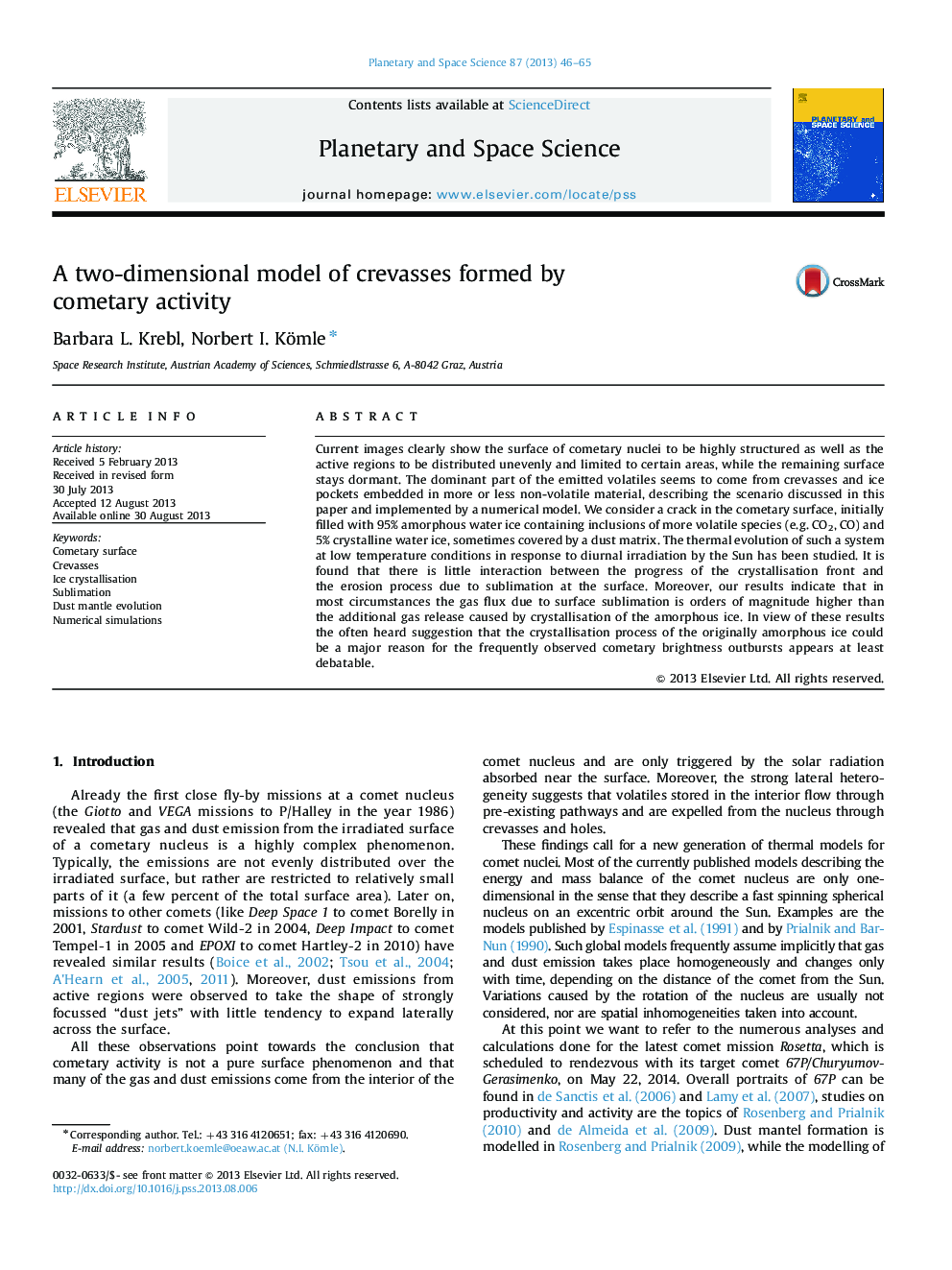| Article ID | Journal | Published Year | Pages | File Type |
|---|---|---|---|---|
| 1781195 | Planetary and Space Science | 2013 | 20 Pages |
Abstract
Current images clearly show the surface of cometary nuclei to be highly structured as well as the active regions to be distributed unevenly and limited to certain areas, while the remaining surface stays dormant. The dominant part of the emitted volatiles seems to come from crevasses and ice pockets embedded in more or less non-volatile material, describing the scenario discussed in this paper and implemented by a numerical model. We consider a crack in the cometary surface, initially filled with 95% amorphous water ice containing inclusions of more volatile species (e.g. CO2, CO) and 5% crystalline water ice, sometimes covered by a dust matrix. The thermal evolution of such a system at low temperature conditions in response to diurnal irradiation by the Sun has been studied. It is found that there is little interaction between the progress of the crystallisation front and the erosion process due to sublimation at the surface. Moreover, our results indicate that in most circumstances the gas flux due to surface sublimation is orders of magnitude higher than the additional gas release caused by crystallisation of the amorphous ice. In view of these results the often heard suggestion that the crystallisation process of the originally amorphous ice could be a major reason for the frequently observed cometary brightness outbursts appears at least debatable.
Related Topics
Physical Sciences and Engineering
Earth and Planetary Sciences
Geophysics
Authors
Barbara L. Krebl, Norbert I. Kömle,
